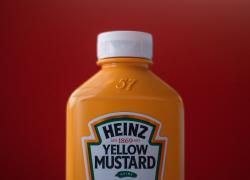
Aura bids to join the bladder cancer crowd
As the non-muscle invasive space is carved up, Aura tries to seize part of it.
As the non-muscle invasive space is carved up, Aura tries to seize part of it.

Backed by a handful of patient responses Aura Biosciences has revealed that it will at last take its virus-like drug conjugate belzupacap sarotalocan into further studies in non-muscle invasive bladder cancer (NMIBC).
Bel-sar's primary indication is choroidal melanoma, where the phase 3 Compass trial reads out next year, but last week Aura announced an "accelerated development plan" involving the start of a phase 1/2 trial in NMIBC. Aura is entering a crowded NMIBC field that's increasingly being cut by disease severity and the need for BCG.
While most competitors are targeting high-risk NMIBC, Aura is to test bel-sar in intermediate and high-risk disease. This is backed by phase 1 data of light-activated bel-sar, showing four clinical complete responses among five intermediate-risk, and one among five high-risk patients. There were no responses among five intermediate-risk subjects given bel-sar without light activation.
Aura reckons its new phase 1/2 study, which is to test higher bel-sar doses than phase 1 did, as well as investigating multiple treatment cycles, could deliver its first response data as soon as this year, though durability won't become evident until 2026.
The company is trading 55% below its 2021 IPO, at which plans for a phase 1/2 bladder cancer study were first mooted. It could do with some good news, but one big threat to its plan is UroGen's intravesical mitomycin UGN-102, which is awaiting an FDA decision on its approvability by a 13 June PDUFA date.
This latter project is key because it targets low-grade intermediate-risk NMIBC, and UroGen has stressed its potential to become the first US-approved medicine for this earlier NMIBC setting – something that would cut into Aura's potential market.
Selected players in non-muscle invasive bladder cancer
| Drug | Company | Trial | Setting | BCG status | Note |
|---|---|---|---|---|---|
| Keytruda | Merck & Co | Keynote-057 | High-risk NMIBC | BCG-unresponsive | US approved 8 Jan 2020 |
| Adstiladrin | Ferring/ Royalty Pharma | CD-003 | High-risk NMIBC | BCG-unresponsive | US approved 16 Dec 2022 |
| Anktiva | ImmunityBio, ex Altor Bioscience | Quilt-3.032 | High-risk NMIBC, BCG combo | BCG-unresponsive | US approved 22 Apr 2024 |
| UGN-102 | UroGen | Envision | Low-grade intermediate-risk NMIBC | BCG-naive | 13 Jun 2025 PDUFA date |
| TAR-200 | Johnson & Johnson, ex Taris Biomedical | Sunrise-1 | High-risk NMIBC | BCG-unresponsive | Jul 2025 PDUFA date (assumed) |
| Cretostimogene grenadenorepvec | CG Oncology, ex Kissei | Bond-003 | High-risk NMIBC | BCG-unresponsive | 76% CR rate (n=110), filing plans undisclosed |
| Belzupacap sarotalocan | Aura Biosciences | Phase 1 | Intermediate/high-risk NMIBC | Some BCG-unresponsive | 80% CR rate (n=5) in intermediate, 20% CR rate (n=5) in high-risk patients given light-activated product |
| TARA-002 | Protara Therapeutics | Advanced-2 | High-risk NMIBC | Some BCG-naive, some unresponsive | 80% CR rate (n=5) |
Source: OncologyPipeline.
The high-risk end of Aura's market opportunity is already extremely competitive, principally featuring Merck & Co's Keytruda and Ferring's Adstiladrin. This space is about to get even more crowded, with Johnson & Johnson's gemcitabine-releasing intravesical system TAR-200 facing a PDUFA date thought to fall in July.
Still a somewhat unknown quantity is cretostimogene grenadenorepvec, an oncolytic virus in development at CG Oncology. This has now yielded several iterations of data from its pivotal Bond-003 study in high-risk NMIBC, the latest of which, last week, showed a 76% complete response rate among 110 patients at a 20 January cutoff.
While creto-vec is likely to head to the regulators soon, GC has still not revealed specific filing plans, or how much data agencies will want to see. Most recently 46% of Bond-003 patients were said to be in complete response at 12 months, with 30 confirmed responses at 24 months, and the data were "continuing to mature".
Meanwhile, in the separate setting of muscle-invasive bladder cancer AstraZeneca saw Imfinzi with and without chemo approved in the neoadjuvant and neoadjuvant setting on Friday. This was backed by the Niagara trial, and came in spite of the FDA's concern about the design of similar studies in perioperative settings.
991













